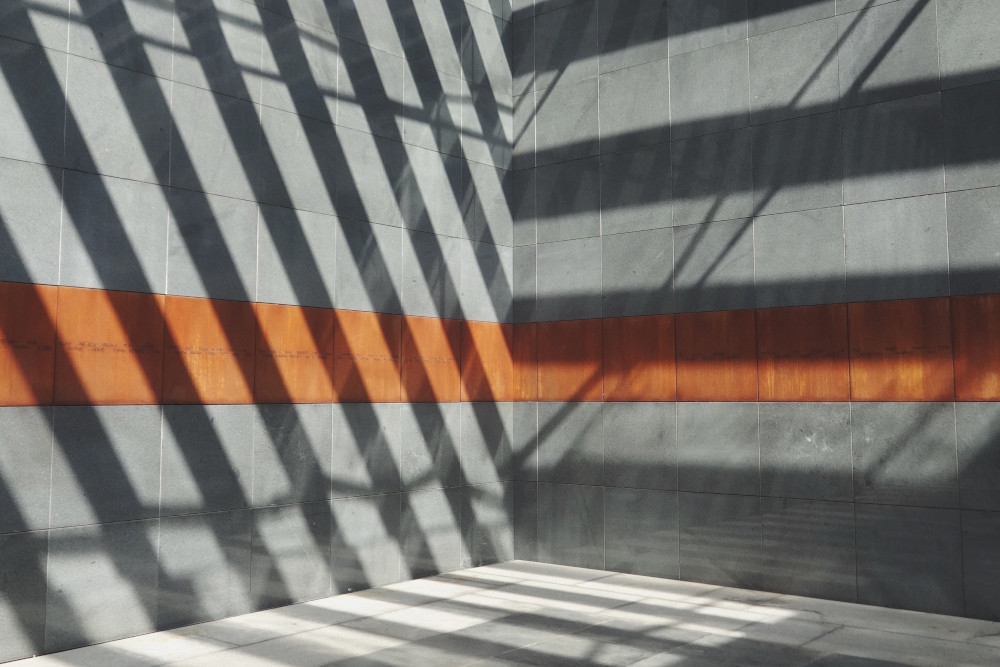India private equity’s long wait for an institutionalised local LP base
ChrysCapital Partners has more than enough demand to support the raising of India’s largest-ever PE fund. A final close on Fund X at the institutional hard cap of USD 2bn is expected in the next few months. And for the first time in the firm’s history, some of the capital will come from local LPs.
It will be a relatively small allocation – about USD 200m, according to sources familiar with the situation – but significant in the wider context of Indian private equity. The country’s most popular managers have to date relied largely, or entirely, on international investors. Now, though, they are more actively courting a local LP base that is learning to appreciate the asset class.
“We did not raise domestic capital in the past as the understanding and maturity of domestic pools of capital was still evolving,” said Gaurav Ahuja, a partner at ChrysCapital. “It made sense for these pools of capital to experience one or two fund cycles before we started to tap into this market.”
The logic of raising local money has long been acknowledged: it removes concerns about currency depreciation; it is familiar with India’s macro and business environment, so doesn’t need to be sold on the growth story or reassured about the nuances; and a geographically diversified LP base is desirable at a time when external events could imperil commitments.
Should this capital become more accessible, it would benefit a market that has seen consecutive yearly declines in PE and VC fundraising since 2022, according to AVCJ Research. This reflects broader regional trends, but it is also indicative of a highly concentrated ecosystem.
ChrysCapital and Kedaara Capital – which closed its fourth fund on USD 1.7bn last year – are responsible for six of the eight largest private equity funds raised by independent managers. They are two of barely a handful of Indian managers to whom most international LPs gravitate.
“If Kedaara IV was not so significantly oversubscribed by our global investors, we would have tried to have a component of rupee capital in the fund,” said Manish Kejriwal, a founder and managing partner at the firm, who completed fundraising for that vintage within four months.
Most local managers are not so advantaged. Depending on fund size and longevity, they will be at some point on a journey that began with support from high net worth individuals (HNWIs) and may now feature local institutional capital and global LP money. The balance may shift with each vintage.
Continued maturation of the domestic investor ecosystem is vital because it enables smaller managers to access new capital channels and scale up – for example, global institutional LPs draw comfort from seeing local peers in funds and are more likely to commit themselves. However, for local money to have this catalytic effect, it must first become truly institutional in make-up and mindset.
“In any large economy, both GPs and LPs tend to be significantly homegrown. In India, this hasn’t happened so far, not because we don’t have enough savings, but because there are regulatory encumbrances that hinder the flow of domestic savings to alternatives,” said Gopal Jain, a managing director and CEO of Gaja Capital.
Inside the ecosystem
Pensions are subject to the most obvious regulatory encumbrance – they do not feature on the private equity agenda. For example, India’s National Pension System Trust, responsible for INR 11.7tn (USD 136bn) under 11 pension plans as of March 2024, has a 0.1% alternatives allocation. Like other pension systems, it is limited to real estate and infrastructure.
This leaves banks and insurance companies, where the most frequently referenced names are State Bank of India (SBI), ICICI Bank, Kotak Mahindra Bank, HDFC Bank, SBI Life Insurance, Life Insurance Corporation of India (LIC), and HDFC Life Insurance. They may back funds raised under categories one and two of the onshore alternative investment fund (AIF) regime, but with limitations.
Insurers are subject to assets under management (AUM) exposure caps – 5% for general insurers and 3% for life insurers. On the banking side, the Reserve Bank of India (RBI) recently proposed a looser scheme under which banks and non-bank financial companies (NBFCs) would be able to account for up to 10% of an AIF corpus individually and up to 15% collectively.
According to Arvind Mathur, founder and chairman of the Indian Limited Partners Association (INLPA), which was founded in 2024 to propagate better LP practices, institutional LPs tend to write cheques for private equity of USD 3m to USD 12m. Other industry participants cite larger numbers, suggesting that banks have been known to commit upwards of USD 20m.
Asked about this inherent conservatism, Mathur observed: “This is not because there’s a lack of capital. It’s more because of a lack of appreciation and a relatively limited number of GPs with great track records.”
Domestic LPs are climbing a steep learning curve in terms of appreciation of the asset class. Fund-of-funds can play a role in this process, making decisions on behalf of LPs but also sharing insights into the process and the industry knowledge that underpins it.
There are two established players operating under government mandates. Small Industries Development Bank of India (SIDBI) has raised 11 fund-of-funds since its formation in 1999 and claims to have backed more than 200 funds, mainly in the venture capital space.
National Investment & Infrastructure Fund (NIIF), meanwhile, runs a private markets strategy that accounts for USD 600m of its USD 4.9bn in AUM. The 2019-vintage fund-of-funds has backed nine local GPs to date, according to its website, including Multiples Alternate Asset Management, Lighthouse Funds, and InvAscent Capital.
NIIF’s brief is to help global institutional investors get access to India, placing them alongside the government capital that anchors the fund-of-funds. However, local institutional players, such as insurance companies, also feature in the manager’s roster of LPs.
“The local regulations for insurance companies allow about 3% to 5% of their capital to be invested into funds, so it is a relatively small portion of their exposure within that,” said Anand Unnikrishnan, a managing partner and head of private markets at NIIF.
“Not every insurance company has reached the limits of their exposure, so they’re typically writing smaller cheque sizes. I think they are at the early stages of their learning curve in most cases.”
Getting comfortable?
For the likes of Multiples, Lighthouse, and InvAscent, there is a recognition that local investors can become more prominent in traditionally offshore-dominated LP bases. These investors – a mix of institutions, HNWIs and family offices – accounted for 30% of the capital in InvAscent’s fourth fund, which closed on USD 304m earlier this year. The share was far lower in prior vintages.
Similarly, Lighthouse closed its fourth fund on USD 475m last year, having sourced one-third of the corpus from local sources. Most of this came from banks and insurers writing cheques of USD 20m or more, according to a source familiar with the situation.
IvyCap Ventures, meanwhile, raised two funds onshore before bringing global investors into Fund III, where they accounted for 10% of the corpus. The local LP base has always been institutional, featuring SIDBI, SBI, HDFC Life, and Life Insurance Corporation of India, among others.
Upskilling is essential to a deeper understanding of private equity, and industry participants note that banks are particularly proactive in developing internal resources. Vikram Gupta, a founder and managing partner at IvyCap, acknowledged the level of progress made.
“Indian institutional capital has never been easy to raise. Obviously, they understand this asset class now, but at the time when I raised my first fund [in 2012], they didn’t. It was purely based on trust and investing through an allocation they had just to see what happens,” he said.
“They wouldn’t have dedicated teams, and their teams would not understand this asset class, so you would have to educate them.”
Other investors described scenarios where they would be put in front of teams responsible for public equities or category-three AIFs, which focus on hedge fund and PIPE strategies. INLPA’s Mathur describes the emergence of teams for category-one and category-two AIFs as evidence of LPs “coming of age,” although it applies to some more than others.
“During the initial years of private equity in India, they lacked experience and exposure,” he added. “You can broadly categorise them into two groups – those with absolutely zero experience of investing in private equity funds and those with some experience, good or bad.”
This evolution can also be tracked in terms of sophistication in negotiation. Nandini Pathak, a partner at Bombay Law Chambers, recalled holding training sessions for the LPs of GP clients five years ago during which she went over basic rights and obligations. Those days are long past.
“They all come with their own legal arsenal where they have a host of side letter rights that they want to ask for,” Pathak explained. These extend from co-investment or first-look provisions to most favoured nation (MFN) clauses that enable LPs to exit with their principal plus 15% interest in the event of a specific misbehaviour by the manager.
“GPs are having to make significant compromises to get domestic LPs across the line,” added Divya Thakur, a partner and India co-chair at Morgan Lewis. “While compromises can win commitments, they add operational complexity and can blur the alignment of incentives that drive performance.”
Family matters
Family offices and HNWIs are also becoming increasingly sizeable and vocal LPs. This is a function of accelerated wealth creation and asset diversification as investors who once held their fortunes in property and gold turn to public equities and from there to alternative investments.
At the same time, younger generations are more open to relying on third-party experts in the management of their assets, according to Rohan Paranjpey, a managing director and head of alternative investments at multi-family office Waterfield Advisors. This process of institutionalisation has led to increased allocations to private markets and the creation of fund investment programmes.
Pathak added that she has seen single-family offices cut cheques large enough to qualify as anchor LPs in funds and request investment committee representation. However, this is the exception not the rule. Paranjpey concurred that few groups have the resources and mindset to take such actions.
“Unfortunately, currently the ecosystem doesn’t have any large family offices that are consistent LPs across fund cycles,” he said. “It doesn’t seem like they think of it that way either, and this applies to some of the most sophisticated family offices who are very institutionalised. They will invest in one fund of the GP and sit out of the subsequent funds.”
Sharrp Ventures, which invests on behalf of the Mariwala family, represents the more sophisticated end of the spectrum. It has around USD 500m in AUM, of which 40% is deployed in private markets. Funds make up about one-quarter of this allocation, and the family office has backed approximately 20 vintages to date, mostly first-time funds.
Rishabh Mariwala, founder and managing partner at Sharrp, told AVCJ that performance has been underwhelming, noting that fund commitments require more patience than direct investments. He sees this long-term mentality as being at odds with the typical Indian family office approach of prioritising short-term upside optimisation over strategic asset allocation.
Put simply, the wealth channel has yet to exhibit the stickiness, or consistency across vintages, that distinguishes institutional investors globally. It means managers with the luxury of choice might be reluctant to accept family office or HNWI capital.
To some extent, this criticism extends to India’s nascent institutional LP community as well. No one disputes that it will take time to replicate the best practices of international peers.
“Despite this momentum, there is distance to cover in terms of their understanding of the asset class and streamlining internal systems and processes to meet industry demands. There may also be a need for deeper specialised expertise within investment teams,” said Thakur of Morgan Lewis.
One stumbling block is that exposure to private equity and venture capital funds amounts to very small balance sheet exposure for banks and insurance companies. The departments responsible therefore rank low on priority lists in terms of resources.
GPs must also play their part in enacting change, INLPA’s Mathur added. First, they need to build track records worthy of consideration. Indian private equity has seen its period of famine, notably when sparse distributions from the 2007-2008 vintages led to years of weak fundraising as LPs pulled back. Positive sentiment has returned in recent years, with India leading the region in exit proceeds.
Second, the industry must be reputationally sound in the eyes of LPs and regulators. The recent RBI proposal on bank participation in AIFs is a case in point. It follows the lifting of a ban imposed in late 2023 after banks were found to be making new loans so that troubled companies could repay existing debts. In some cases, banks had equity exposure to these companies via funds.
The rollback could be seen as recognition of the importance of these institutions as LPs – both for their balance sheets and for the private equity industry. According to Pathak, the proposed rules are not up to industry standards, but nevertheless, they are a step in the right direction.
Bullish outlook
Indeed, NIIF’s Unnikrishnan sees no real obstacle to domestic LPs increasing their commitments to the asset class, apart from time. “I don’t think of it as any specific challenge in the market, be it regulatory or lack of understanding,” he said. “Rather, it’s that they are early investors in a new asset class, and they need to experience it before allocating large sums of capital.”
This optimism is shared by others. ChrysCapital’s Ahuja hopes that continued evolution on the part of institutional LPs and regulators will ultimately lead to an easing of exposure restrictions, and larger shares of AUM will be channelled into alternatives.
Unnikrishnan goes so far as to suggest that local LPs – including institutional and non-institutional money – could account for an average of 30%-50% of commitments to AIFs within 10 years. He observed that it took pension funds a similar amount of time to get comfortable with public equities.
“Today, we have pension funds that are investing in public equities and more, including alternatives, but at the listed end. It’s only a matter of time before domestic capital starts coming into private equity in large amounts, too,” Unnikrishnan said.
This raises the question of whether international LPs could find themselves crowded out of oversubscribed funds as domestic players ramp up their exposure. Multiple industry participants are quick to scotch the notion, citing the impact of assorted unknowns, from the number of high-quality GPs to perceptions around investment opportunities to the growth of the overall market.
“India is going to continue to be a capital-starved country for a long time,” said IvyCap’s Gupta. “So, there will always be more demand for capital than supply of capital.”














